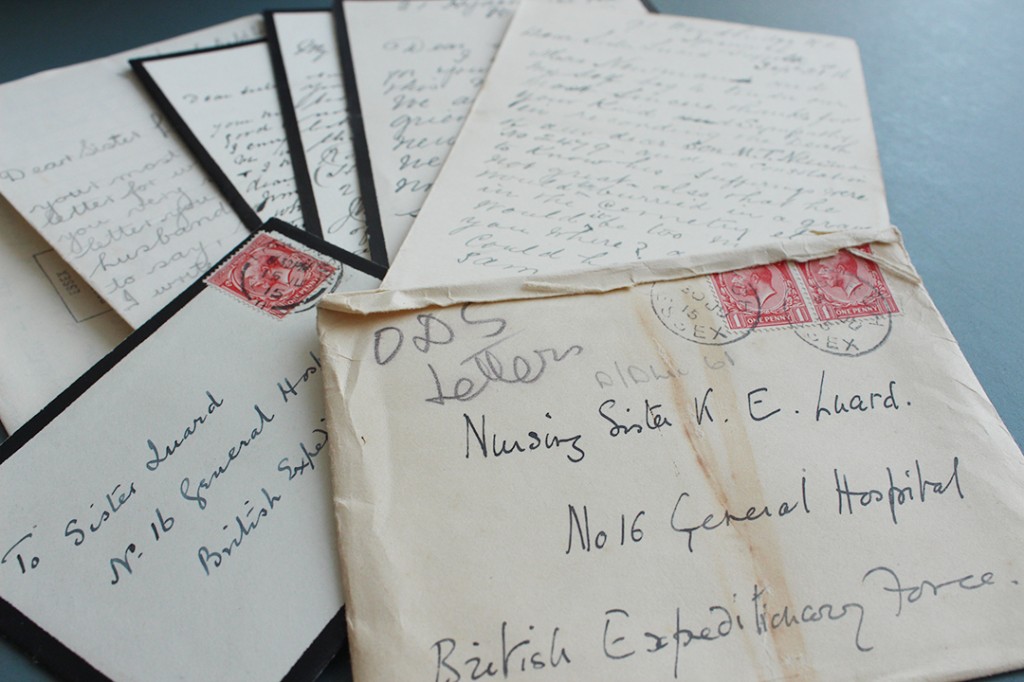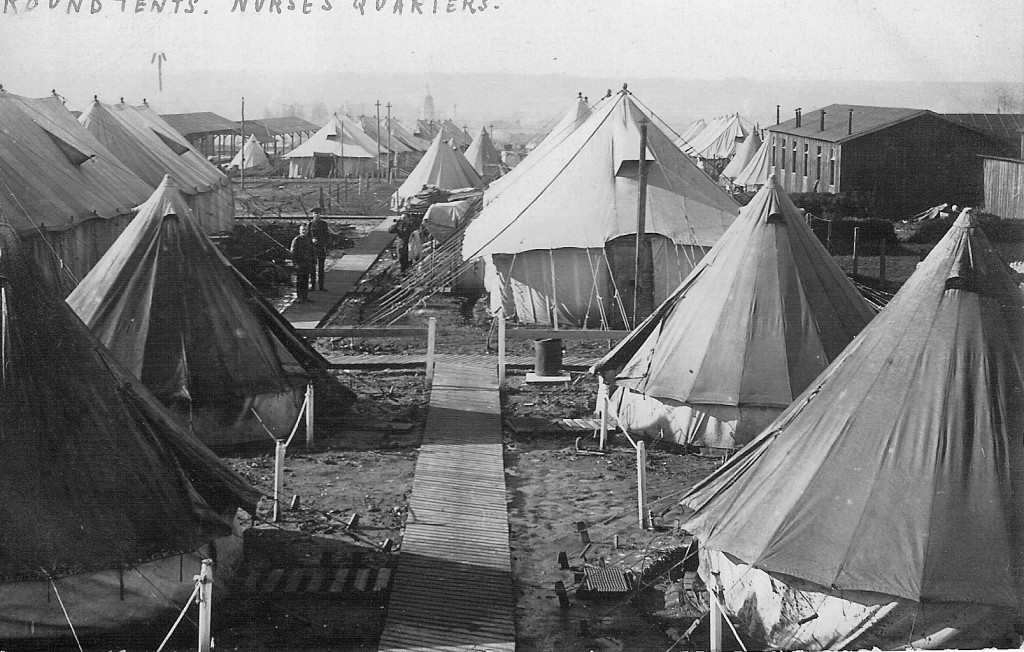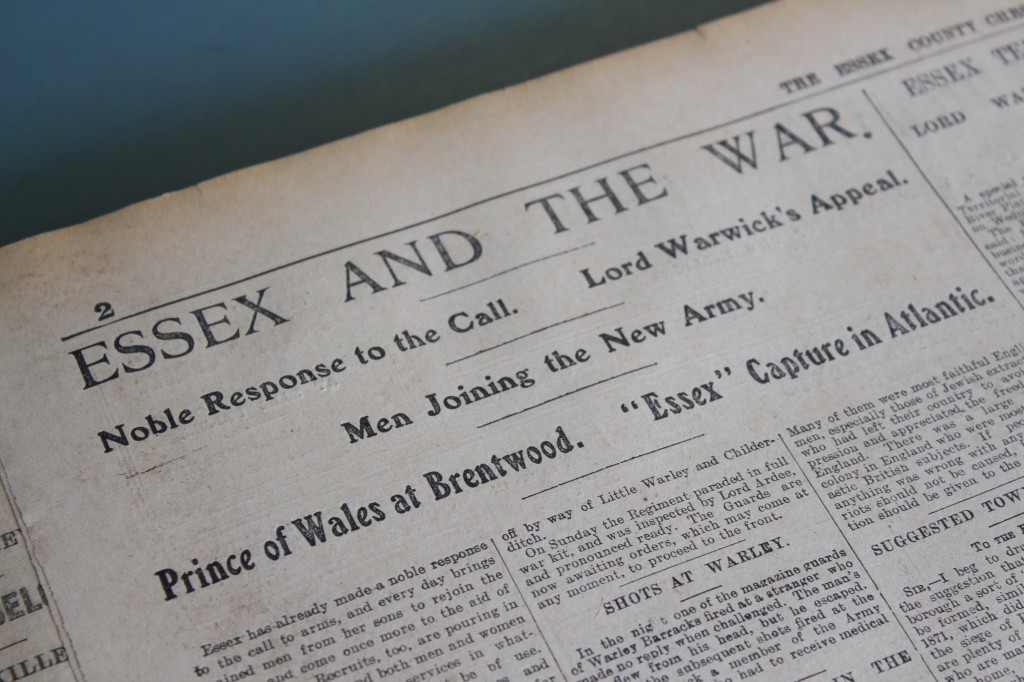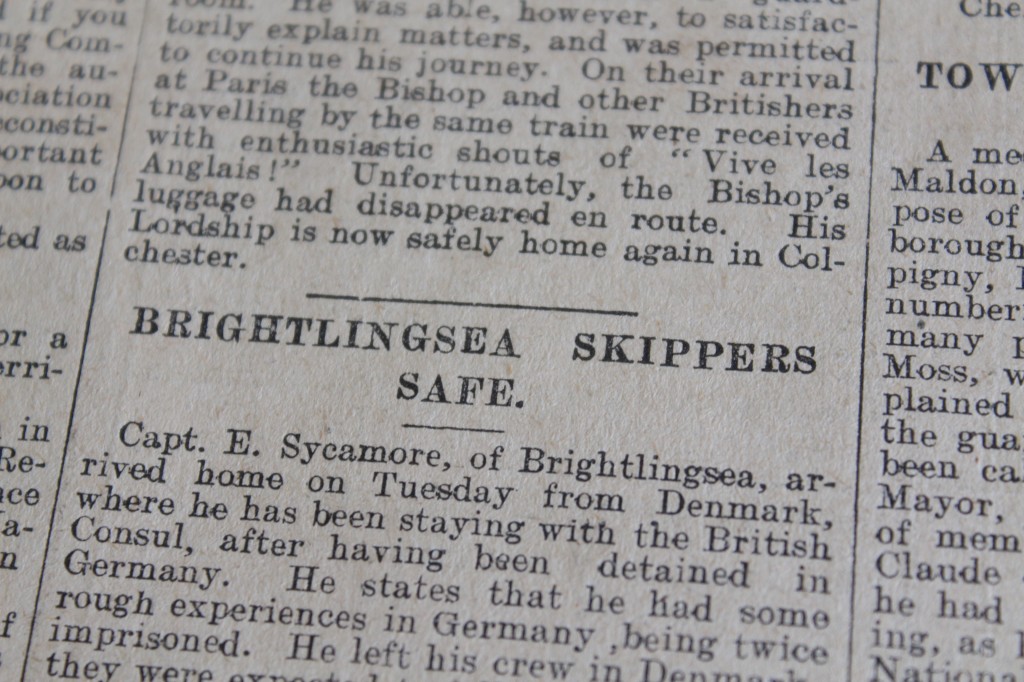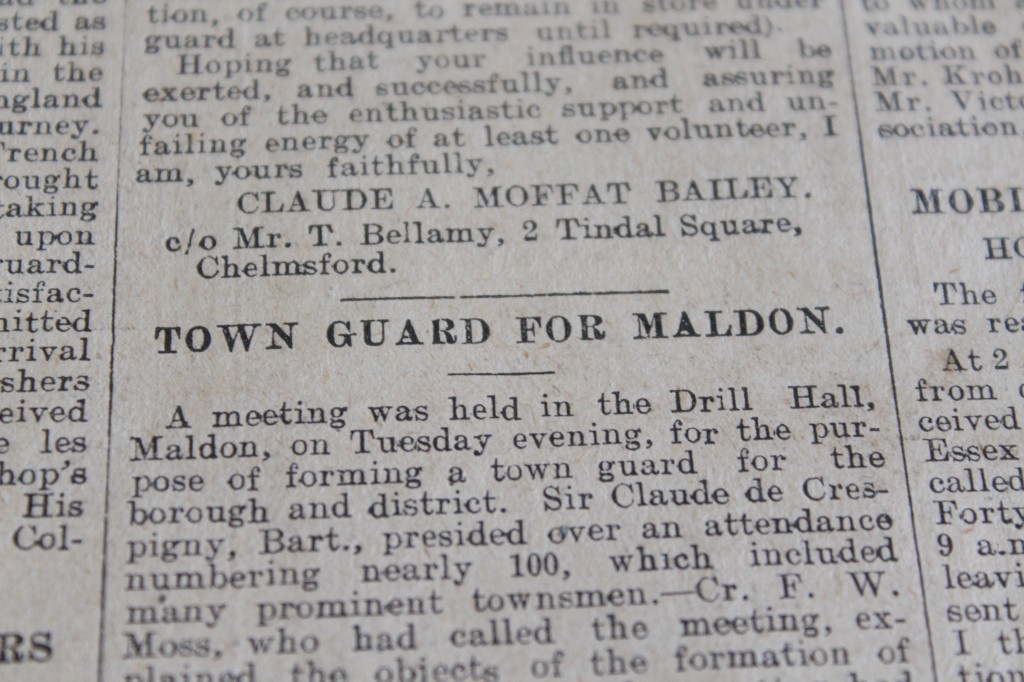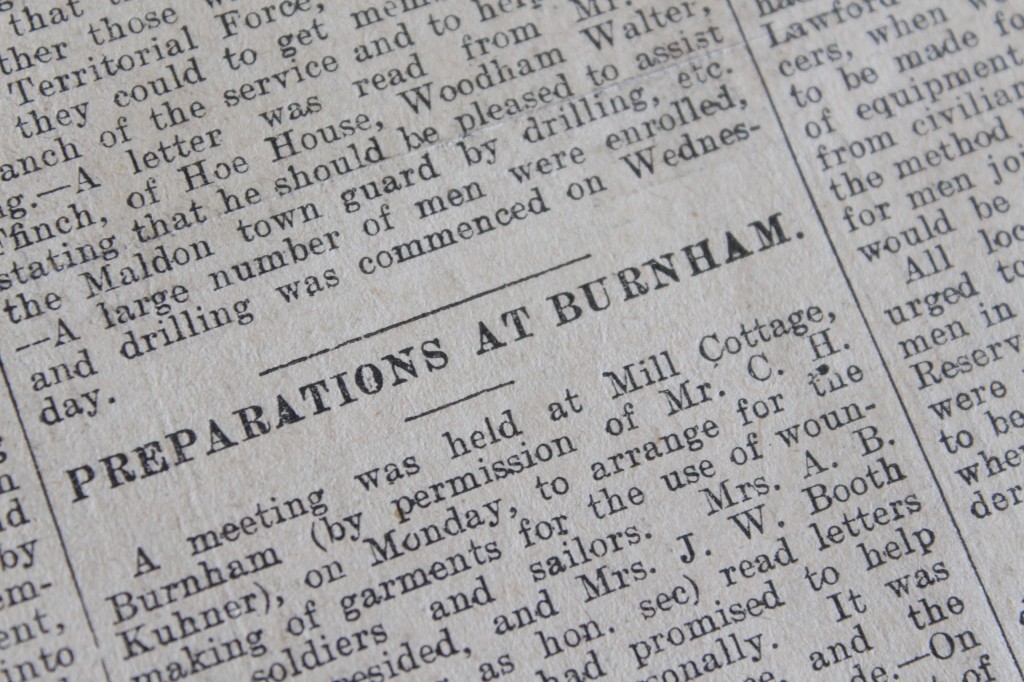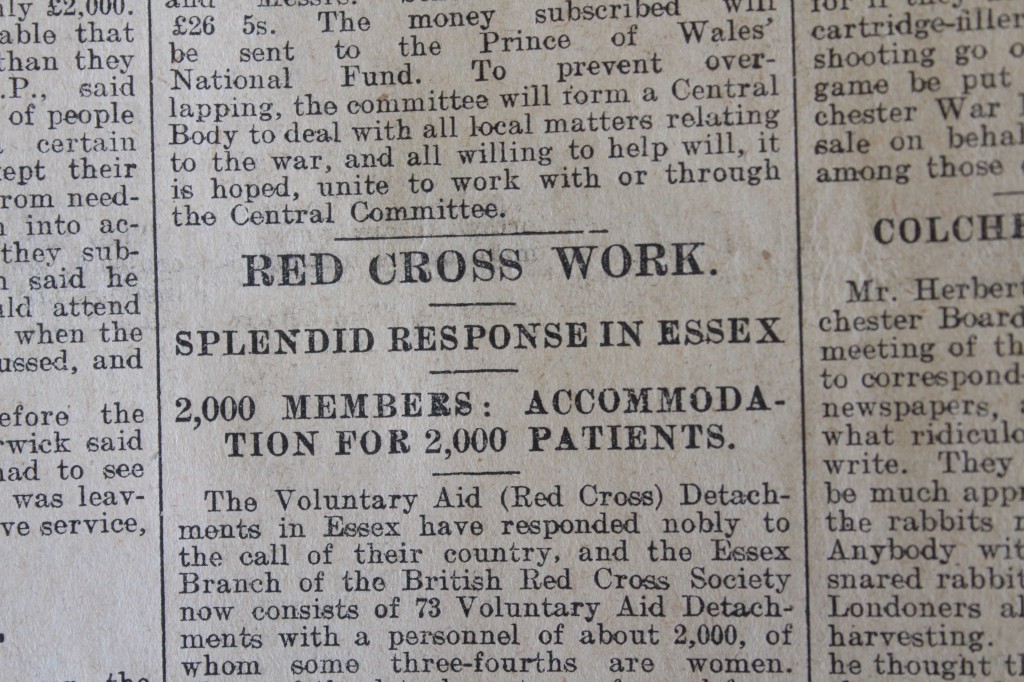One of the stories we have been following over the course of the First World War centenary commemorations is that of Sister Kate Luard (read all our posts about her here). Kate was born in Aveley in 1872 and grew up in Birch near Colchester. On the outbreak of the war she volunteered to nurse on the Western Front, and remained there for the duration of the war.
During this time she wrote numerous letters, the majority of which are cared for at ERO. Her great niece, Caroline Stevens, has put together the following extracts from her letters written home at this time 100 years ago, when Kate was posted to No.6 Casualty Clearing Station.
During the Great War of 1914-1918, Kate Luard served principally on ambulance trains, casualty clearing stations and a field ambulance, but was also posted at times to Stationary and General Hospitals in the base areas.
On 17 October 1915 she was sent up the line to take charge of No.6 Casualty Clearing Station at Lillers in France following four months at a base hospital, No.16 General Hospital. Her second book, Unknown Warriors, commences on this date and in this her letters home are a record of her times in various casualty clearing stations. This included time as Head Sister at No.32 CCS which became one of the most dangerous when the unit was relocated in late July 1917 to serve the push that was to become the Battle of Passchendaele, and where she had a staff of forty nurses and nearly 100 orderlies.
A casualty clearing station was part of the evacuation chain of the wounded from the battle front starting with the regimental aid post just behind the front line, then an advanced dressing station and on to a field ambulance before transfer to a casualty clearing station. CCS’s were normally located near railway lines and waterways so that the wounded could be evacuated easily to the base hospitals. A CCS often had to move at short notice as the front line changed. Although some were located in temporary buildings, many consisted of large areas of tents and marquees and often several were near each other to enable flexibility.
The following are extracts from Unknown Warriors, which was republished in 2014 by the History Press. For more information about Kate Luard and her family see www.kateluard.co.uk
October18th
The sister has been showing me round and handing over her books and keys of office. The poor lads in their brown blankets and stretchers looked only too familiar. When there is a rush, the theatre Sister and I stay up at night as well. The CO [Commanding Officer], the Padre and myself are the only people allowed to do the censoring. I do it for the Sisters. I shall have to be very careful myself, not to mention names, numbers passing through, regiments, plans, or anything interesting.
Thursday, October 28th
The weather is beyond description vile, and the little cobbled streets are a Slough of Despond and a quagmire. The King has been about here yesterday and today, and was to have held a very sodden and damp Review a mile away, only he had an accident riding and had to be carried away instead: no one knows if it was much or not.
Saturday, October 30th
A boy came in at 6 p.m. with his right arm blown clean off in its sleeve at 2.p.m. He was very collapsed when he came in, but revived a little later. ‘Mustn’t make a fuss about trifles,’ he explained.
Sunday, October 31st
This afternoon we took a lot of lovely flowers to the Cemetery for our graves for All Saints’ Day. It took all afternoon doing them up with Union Jack ribbon, and finding the graves. There are hundreds. It was a swamp of sticky mud, and pouring with rain.
All Saints’ Day 1915, November 1st
A Scotch RAMC (Royal Army Medical Corps) officer, who was with his Regiment all through, was talking about the early morning of the 14th, after we had tried to take the Hohenzollern Redoubt on the 13th. Our dead and wounded were lying so thick on the ground, that he had to pick his way among them with a box of morphia tabloids, and give them to anyone who was alive: tie up what broken limbs he could with rifles for splints, and leave them there: there were no stretchers.
Wednesday, November 3rd
A lad had to have his leg off this morning for gas gangrene. He says he ‘feels all right’ and hasn’t had to have had any morphia all day. You’d think he’d merely had his boot taken off. Some of them are such infants to be fighting for their country. One has a bullet through his liver and tried to say through his tears ‘there’s some much worse than what I am.’
Friday, December 3rd
Captain D. is a scrap better to-day, able to emerge from bromides, and talk a little. He told me that when they were holding the Hohenzollern trenches in that worst weather, when they stood up waist-high in liquid mud, two of his men slipped under it when they were asleep and their bodies were dug out next day.
Sunday, January 16th
D.F. the boy with the head wound, has been peacefully dying all day; his hand closes less tightly over mine to-day, but his beautiful brown eyes look less inscrutable as he gets further from this crooked world.
_________________________________________________________________________
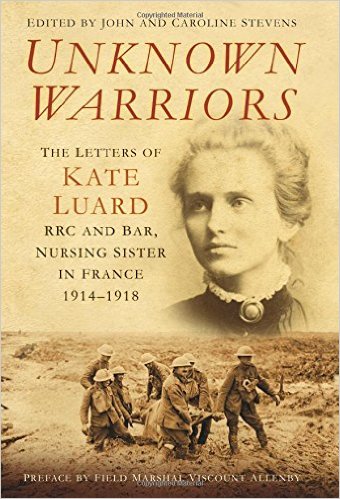 Unknown Warriors is available in the ERO library, or you can find out more about the book and Kate herself here.
Unknown Warriors is available in the ERO library, or you can find out more about the book and Kate herself here.

